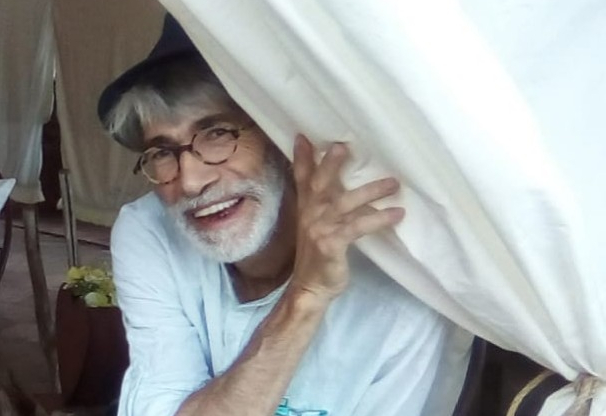
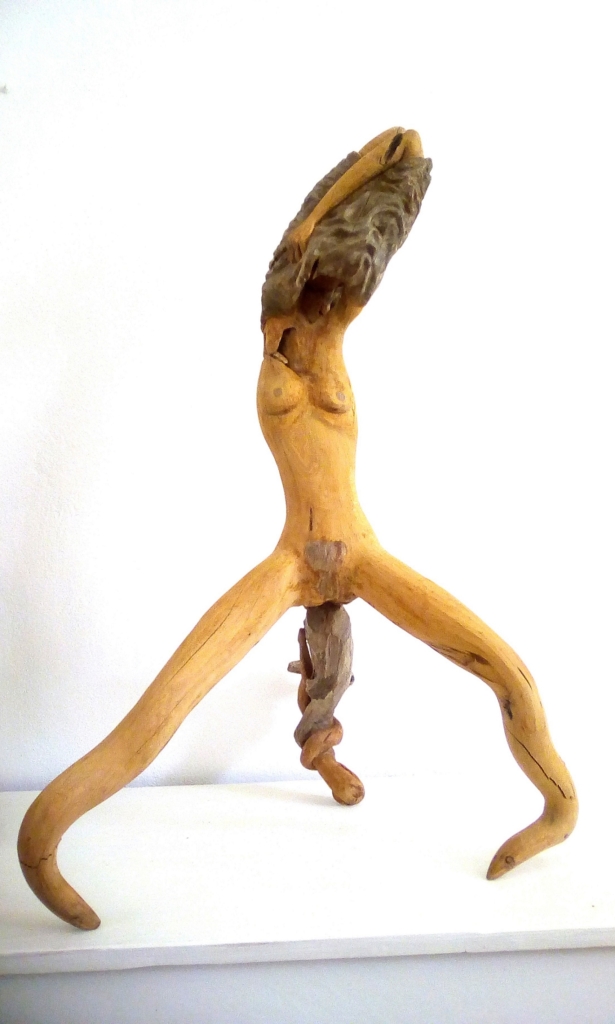
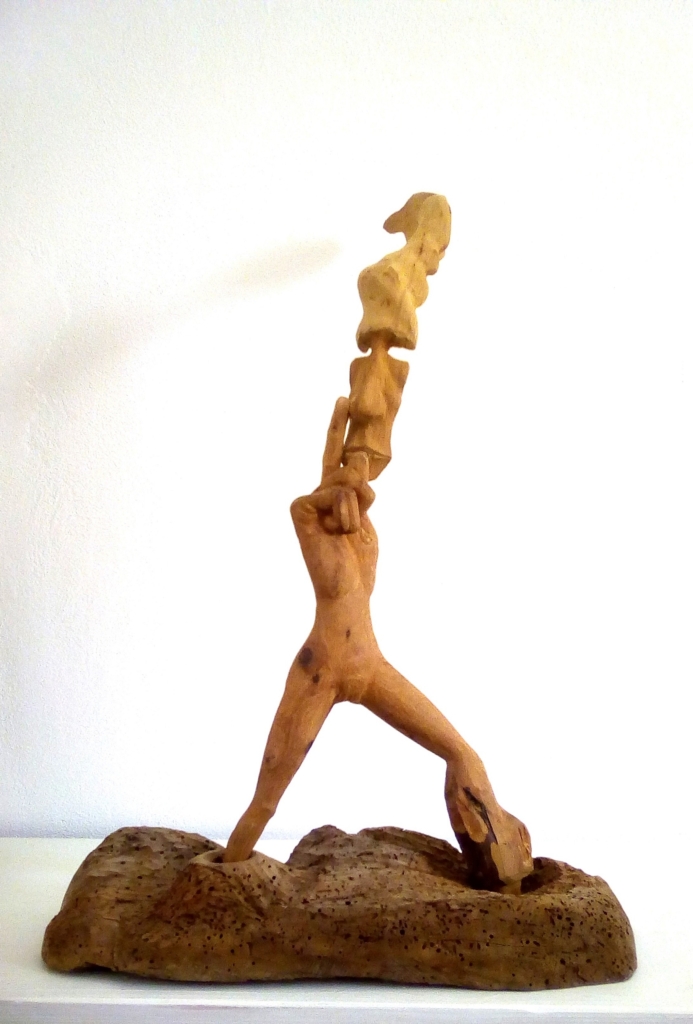
Doneddu rappresenta un corpo che in qualche modo si oppone, combatte con le forze esterne a sé che vorrebbero costringerlo a soccombere, a rinunciare alla propria individualità, al proprio libero pensiero; l’esilità dei suoi personaggi non può non riportare alla memoria i corpi allungati di Alberto Giacometti perché simile è il senso di resilienza che emanano, uguale è la forza che impiegano per resistere a cambiamenti inevitabili, desolati e rassegnati nel caso di Giacometti ma determinati e risoluti a non soccombere nel caso di Doneddu. Il rapporto con il mondo onirico, come nella scultura Mahea, madre d’acqua,

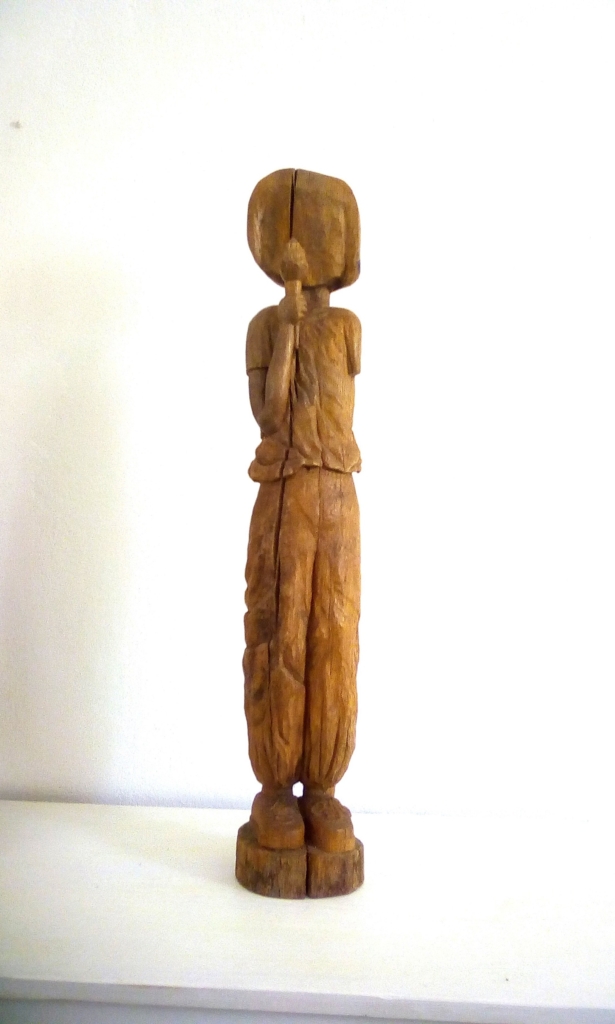
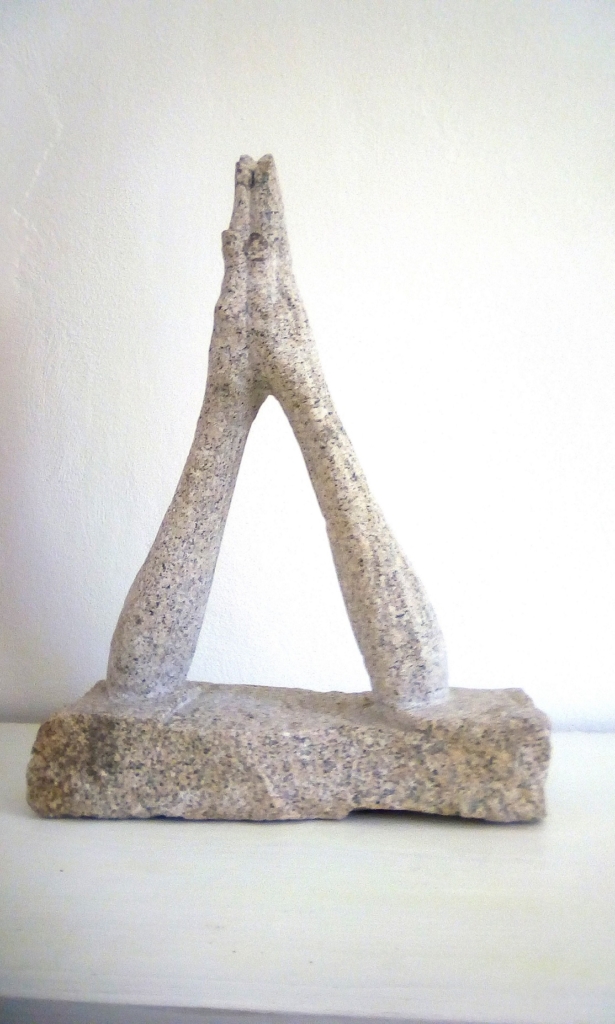
Marta Lock’s interviews:
Battista Doneddu, the slow discovery of the fascinating world of sculpture
Battista Doneddu has always been passionate about art, even if only as a user, and he began to follow the call towards creativity, particularly sculpture, initially only as a hobby, a way of taking refuge in a silent world made up of unveiled emotions, told dreams and contact with an expressive manual ability that he would never have imagined to have. From that day his path, parallel to his main profession necessary for him to cope with the contingency and to maintain the financial stability by virtue of which he can give free rein and exercise his art, is transformed into a constant experimentation, a desire to measure himself with challenges that were unthinkable until a short time before, to approach materials that are different from each other and for this very reason stimulating to discover. His first sculpture was made of juniper wood, a perfumed material typical of Sardinia, the region where the artist was born and has always lived, precisely because of the fascination of a material that combines visual and olfactory sensations, but also because of its ductility and malleability; then he approached all the other woods characteristic of the Mediterranean maquis, each with its own special features, with veins that inspired Doneddu to create sculptures different from each other because they harmonise with the chosen material. At a later stage he discovered stone, in particular friable trachyte and Gallura marble, with which he broadened the creative panorama of his sculpture, which rightfully belongs to Surrealism, both for the sense of mystery, of fragile interaction with the outside world that the characters represented tell, and for the artist’s ability to give body to protagonists belonging to his dreams, figures he imagined that cannot be found in the real world. The difficulties of contemporary life emerge from his men and women, often transformed into entities in which the symbol prevails over the figuration and is mixed with the bodies, generating distorted, deformed images, just as in the nightmares of the more traditional Surrealism of Salvador Dalì or Alberto Giacometti, who also tends decisively towards Existentialism; Doneddu’s sculptures are at times cries that pierce the conscience, drawing attention to current issues that are often ignored or taken for granted because they have become part of common sense, of what society blindly conforms to, despite everything. In the artwork Metamorfosi (Metamorphosis), is evident all the pain of a change which is not so much external as internal, that awareness of the need to let go of everything that no longer belongs to the current character because otherwise it would only constitute a heavy ballast that would prevent the following evolution; yet, despite the awareness, it is not easy to undress – this is the act in which the protagonist figure is immortalised – and free oneself from limiting convictions, from immobilising beliefs that often erroneously constitute a safe zone in which the individual tends to trap himself. And again in Imposizione del silenzio (Imposition of Silence), Doneddu represents a body that in some way opposes itself, fights against the forces outside that would like to force it to succumb, to renounce its own individuality, its own free thought; the slenderness of his characters cannot but bring to mind Alberto Giacometti’s elongated bodies because the sense of resilience they emanate is similar, as is the strength they employ to resist inevitable changes, desolate and resigned in Giacometti’s case but determined and resolute not to succumb in Doneddu’s case. His relationship with the oneiric world, as in the sculpture Mahea, madre d’acqua (Mahea, mother of water), a divinity who appeared to the artist in a dream and does not correspond to any animist iconography, brings him particularly close to Surrealism and the mysterious link that always emerges between dream and reality. Let’s get to know better the artist through this interview. Battista, you started sculpting by pure chance, just following an inner impulse that had no academic basis, how have you come to chose sculpture? And above all, how did you learn an artistic technique that is much less common than painting? I can say that since I was a child I felt a certain sculptural artistic vein, having learned some techniques and familiarity with cork, using the scraps my father produced when he made traditional objects typical of Sardinia, such as the so-called huppu, a utensil that is halfway between a glass and a ladle used both to drink directly from the vat, and in the kitchen to pour water into the pot, and later became an ornamental object still often hung on the walls in typical environments such as holiday farms. I was about seven or eight years old, and armed with scissors and shoemaker’s glue I used to make flowers with those scraps that then I gave my teachers at school, or model of helicopters that I then played with. As I grew up, I discovered pencils and colours, and at school I became the class’s official illustrator when we did the end-of-year magazine made up of stories and poems that each child invented and wrote; I did the drawings to illustrate those writings… I still remember one in particular, the dancing donkey. Growing up, I thought for a long time about becoming a painter, but the more I went on, the more I realised that painting was not for me; later I noticed that wood attracted me much more and one fine day I started to model a piece of juniper wood, carving a hand perfectly, copying it from my own. I was surprised by the resemblance. I thought that if I could make that hand, maybe I could make something else. And so I did. From then I understood what my vocation was, and in the works I have created up to now there is no difference in the refinement of technique as from the beginning, I have always had the exact same manual dexterity as now. So I think it is an innate quality, not an acquired one. How do you reconcile your artistic and professional sides? How many hours a day do you devote to sculpture? Luckily for me, I have a job, night watchman, which allows me to have time during the day to devote to art, even though normal domestic activities take up a lot of my time; however, if I have an hour, I use an hour, but considering that an hour is like a match that is consumed in a flash, in the sense that it goes by very quickly, sometimes is not even worth starting, I usually need at least three hours. In fact, I would spend the whole day sculpting, so that at the end of the day I can see and distinguish the work done. And I have to say that not being able to devote more time to sculpting makes my creative vein feel trapped. It’s like sitting at a table and having to get up after drinking a single glass of water without eating anything, it’s frustrating. Your style is decidedly Surrealist, halfway between the world of dreams and contemporary reality, what is the message you want to convey to those who observe your sculptures? Do you think that today’s life presents profound differences or unexpected analogies with the 20th century, when the movement was born? I believe that in every era, artists have created works in line with their contemporaries, each with their own imagination based on what they saw and experienced, and on the culture of their time. Michelangelo’s contemporaries created artworks that were more centred on mythological or religious themes, but always seen through the eyes of the actuality of that time, because the viewer had to understand what the work represented. I love the surreal because I am a bit a dreamer, so I like to create dreamlike figures, combining fantasy with reality, but which do not exist in reality. Let me give you an example: in the work in granite, an ancient material, Incomplete Prayer, you can see two hands joined in prayer reaching towards the sky and symbolising the love for my land, which is constantly wounded by the scourge of fires and the continual plundering, literally, of the countryside and mountains of stones and rocks simply to sell them or embellish the gardens of private houses, coastal villas and squares. It is a prayer recited by our mother earth that we stop hurting her by ruining entire hillsides, the whole ecosystem and defacing the surrounding landscape in the name of the money god. Now, this is a figure that in my opinion encapsulates a theme that can be reconciled with different eras. Who are the masters of the past who inspired you and how much experimentation did you need to achieve today’s artistic expressiveness? To tell you the truth, I did not have any masters to inspire me due to my lack of specific knowledge and of being a self-taught. I simply went on the spur of the moment, without having a model to inspire me. Let’s say that the desire to learn about famous artists and artworks emerged at the same time as my desire to create. I began to read up on the masters of the past and their works by buying a few magazines, then a few books, and gradually I discovered a whole world; I went looking for Sardinian artists such as Sciola, who was still alive and therefore a contemporary of mine, then Ciusa, Nivola and others. Among the great artists of the past, whom I knew because I had studied him at school, the one who most impressed and then inspired me was undoubtedly Bernini, my favourite because he managed to instil a sense of movement in the artworks. I was impressed by the image of the work Anima dannata. The expressiveness of that work is amazing. Yes, Bernini inspired me, I adore him. As far as experimentation is concerned, each of my sculptures is experimental because in each of them I test my skill, or manual dexterity, every sculpture I make becomes a challenge to myself. Once the work is finished, I know that I would be able to repeat the figure almost identically, but what would be the point? I have won the challenge with myself. You have many solo and group exhibitions to your credit and you also received a special mention in Rome, what has been your greatest satisfaction? What are your next projects? Yes, I have participated in many exhibitions, and I like them very much because they give me the opportunity to meet a lot of new people and old friends. And let’s face it, we artists are all quite vain when we have the opportunity to show our work. Maybe we can be shy and reserved in private life, but during exhibitions we lay ourselves bare, because at the end in every work there is us, our character, our thoughts, there is a little piece of life that we are living, and unconsciously, but not too much, we want to show it and make it known to others, whether happiness or pain, sadness or madness, it is us on display not our works. And the greatest satisfaction is that I exhibit a bit ‘everywhere in Sardinia, in Cagliari, Sassari, La Maddalena, and in many other Sardinian towns, but also in the rest of Italy from north to south, with some presence abroad, such as Southampton, Lisbon and Budapest, something that I would never have imagined. As for the future, I have a few projects still in the embryonic stage, but I plan to put them in the pipeline as soon as possible, as soon as I find the necessary material, which is no small thing considering the size of the artwork. Obviously I’m not revealing anything yet because of superstition, one of my many faults.